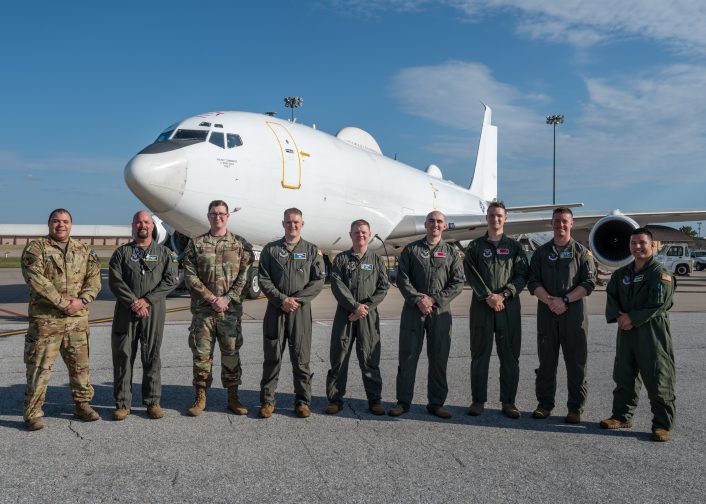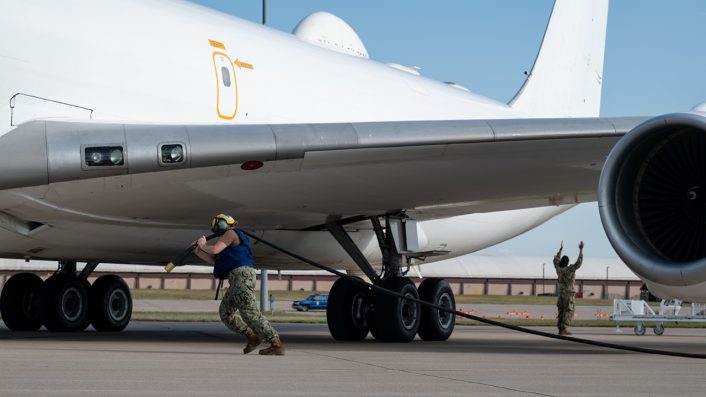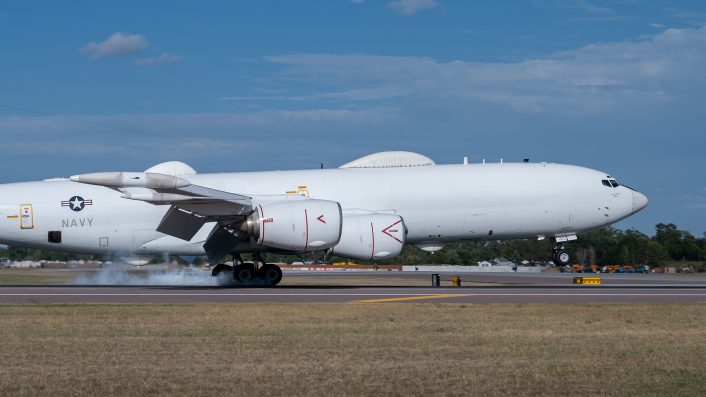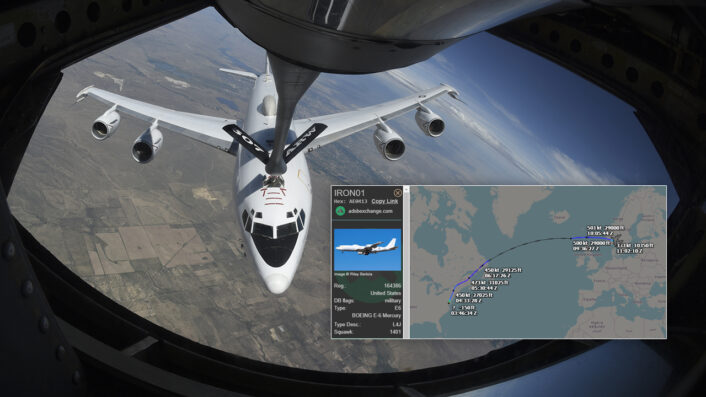E-6 Mercury Enhances Strategic Command and Control in Simulated ICBM Launch.
Airmen and Sailors from several military units, including the 625th Strategic Operations Squadron (STOS), the 576th Flight Test Squadron (FTS), the 91st Missile Wing (MW), and the Navy’s Strategic Communications Wing 1 (SCW-1), successfully completed a Simulated Electronic Launch Minuteman (SELM) test at Offutt Air Force Base, Nebraska, on Sept. 17, 2024. This exercise, conducted twice a year, is designed to test the reliability of the Minuteman III intercontinental ballistic missile (ICBM) system in its deployed environment without an actual launch.

SELM tests play a vital role in ensuring the health and readiness of the U.S. ICBM fleet, part of the US nuclear deterrence triad. Maj. Raun Carnley, assistant director of operations for the 625th STOS, emphasized the importance of these tests in validating the ICBM’s capability in a public release. “SELM tests the selected ICBMs from day-to-day operation to the issuance of the first stage ignition signal,” he explained. During the test, launch commands are sent to a test-configured launch facility from ground-based launch control centers and the Airborne Launch Control System (ALCS) onboard a U.S. Navy E-6 Mercury aircraft.
These tests ensure that the ICBM system will respond as expected if called upon, providing crucial data for Air Force Global Strike Command and U.S. Strategic Command. Maj. Carnley noted the role of SELM tests in maintaining system reliability as updates to software and hardware are rolled out. “A SELM test validates the combat capability of our fielded ICBM weapon system… while saving taxpayer money and avoiding the risks of escalatory messaging that would come with actual operational test launches.”
In other words, “During the SELM, we test everything but the actual flight of the missile,”as a Missile Squadron missile combat crew commander said a few years ago.
The successful execution of a SELM test requires collaboration among several military units.
The 576th FTS is responsible for running the tests, while the 91st MW provides ground operations and maintenance support. SCW-1 supplies the aircraft and aircrew needed for the test, and the 625th STOS plays a critical role, overseeing everything from targeting to launch tracking, to simulating the missile’s flight. The 625th STOS also ensures the ALCS can perform as a backup to ground-based launch control centers if necessary.
Given the complexity of these tests, preparation is extensive. Maj. Carnley explained that the 625th STOS operates on a five-year planning cycle, with specific preparations beginning about four months before each test. “With two tests a year, as soon as one is complete, planning and preparation for the next one begins,” he added.
The SELM tests may not garner the same public attention as operational test launches, but they are critical to maintaining the integrity of the ICBM system and ensuring that it remains a credible deterrent. Senior Master Sgt. Matthew Tobey, senior enlisted leader of the Joint-Nuclear Operations Center (JNOC), highlighted the significance of the ICBM leg of the nuclear triad. “Ensuring the sustainment and capabilities of our nuclear forces not only allows U.S. citizens to sleep soundly at night but provides global stability which also helps foster economic prosperity.”
Ultimately, these tests send a powerful message to both U.S. allies and adversaries: The ICBM system is ready and capable of defending the nation at a moment’s notice. As Carnley put it, “The ICBM leg of the nuclear triad is viable and ready to defend our freedoms and those of our Allies.”
By verifying the effectiveness of the ICBM fleet, SELM tests ensure that the U.S. remains prepared to respond to any threat, thus maintaining global security and stability.

E-6 “Doomsday” plane
The E-6B Mercury aircraft serve a critical dual function within U.S. strategic operations, providing command and control for both the U.S. Navy’s submarine communications and the U.S. Air Force’s strategic forces. In addition to their primary mission of ensuring communication with nuclear submarines, the E-6B fleet is frequently involved in Global Power Missions, which are long-range bomber sorties.
During these missions, the E-6B aircraft offer crucial support by maintaining secure communication links with the bombers via the High Frequency Global Communications System (HFGCS) as they fly from the U.S. to forward-deployed positions in Europe. This capability ensures seamless communication during the transition from U.S.-based alert stations to forward European operations, with the aircraft’s role shifting to support the bombers as they cross the Atlantic.

The term **TACAMO**—an acronym for “Take Charge and Move Out”—captures the E-6B’s essential mission of survivable, airborne communications with nuclear submarines. More notably, the E-6B has the unique capability of serving as an Airborne Launch Control System (ALCS), allowing it to remotely launch Minuteman III intercontinental ballistic missiles (ICBMs). This airborne launch role was originally performed by the U.S. Air Force’s EC-135 Looking Glass fleet until its retirement in 1998, at which point the Navy’s E-6A Hermes aircraft, originally designed solely for submarine communication, were upgraded to the E-6B standard to take over the Looking Glass mission.
The E-6B’s missions often involve deploying one of its two trailing wire antennas, which can extend up to five miles (or eight kilometers) in length. These antennas allow the aircraft to send very low frequency (VLF) transmissions while flying in a tight spiral pattern, enabling communication with submerged submarines over vast distances. The shorter trailing wire can be seen externally, protruding from the tailcone of the aircraft, while the longer primary antenna is stored behind a hatch on the underside of the fuselage, deploying mid-flight when needed. The transmissions from these antennas, often in the form of coded Emergency Action Messages (EAMs), are designed to be intercepted by submarines using commercially available radio equipment. The E-6B also broadcasts high-frequency (HF) signals as part of the HFGCS, ensuring redundancy in communication systems.

Despite the importance of the E-6B in national security operations, the airframes are now over 30 years old. The aircraft were among the last Boeing 707-based models produced, and plans for their eventual replacement are being considered. The most likely successor appears to be a Lockheed C-130J-based platform, returning to the TACAMO program’s roots, as the E-6B had originally replaced a variant of the legacy C-130H. However, it is unlikely that the full Airborne Launch Control System (ALCS) mission will be passed to this new platform, as the U.S. Navy intends to focus primarily on its submarine communications role. This could leave a gap in airborne ICBM command capabilities, which may necessitate the U.S. Air Force developing its own replacement to carry on the full scope of the E-6B’s mission after its eventual retirement.

